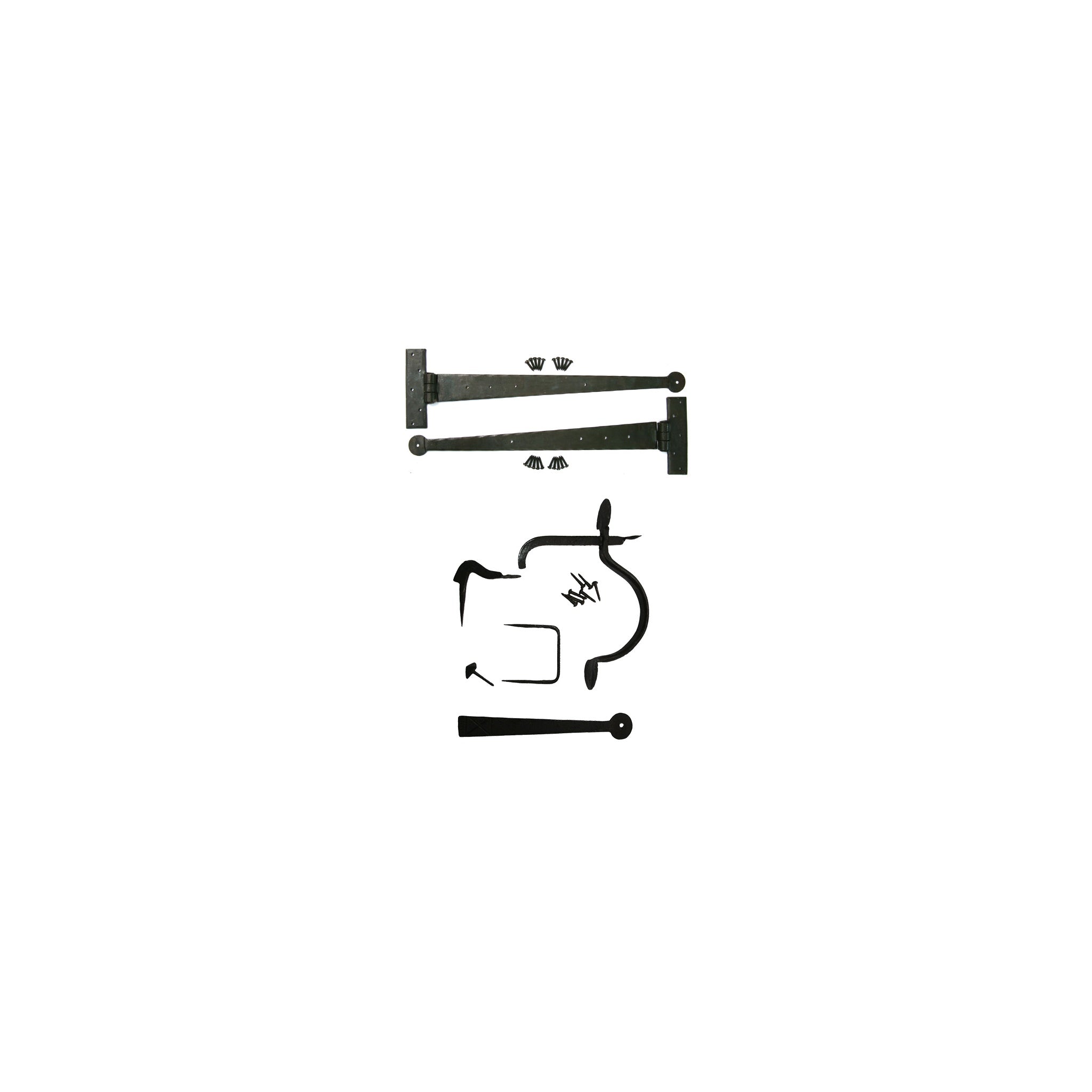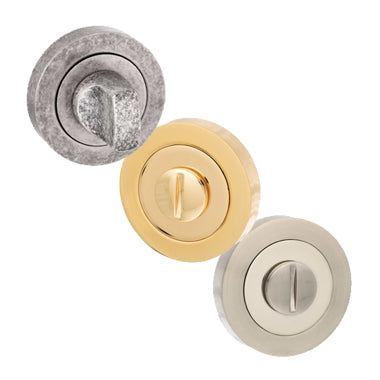Key Takeaways
Section
Key Points
Door Basics
- Prehung vs. Slab Doors: Prehung are ready to install with frame, while slab doors offer design flexibility.
Measurements
- Accurate measurements of height, width, and jamb depth are crucial for a proper fit.
Door Swing
- Outswing doors open outward, good for weather resistance; Inswing doors open inward, a traditional choice.
Material Choices
- Wood, steel, and fiberglass are common materials, each with unique advantages and drawbacks.
Style & Design
- Modern, traditional, and transitional styles cater to different aesthetic preferences.
Energy Efficiency
- Material choice and weatherstripping play roles in a door’s energy efficiency and insulation.
Security
- Material strength and additional security features like deadbolts and smart locks enhance door security.
Installation
- DIY installation can save costs but professional installation ensures quality and handles challenges.
Maintenance
- Regular cleaning, checking hardware, and maintaining the finish prolong door life.
Customization
- Bespoke doors and unique design elements allow for personalization in design and function.
Choosing a new door is a blend of aesthetics, functionality, and often, an energy-efficiency game-changer for your home. Doors are the gatekeepers of our abodes, offering a subtle transition between the external hustle and the internal serenity. This guide will navigate you through the manifold considerations and options while choosing new doors, ensuring you make well-informed choices that resonate with your lifestyle and home decor. Whether you're renovating, building anew, or just aiming to refresh your space's vibe, a door plays a pivotal role in making a statement of design and utility.
Understanding Door Basics
Prehung Doors vs. Slab Doors
The door selection journey primarily bifurcates into two paths: Prehung Doors and Slab Doors. Here’s a comparative glimpse into both:
Aspect
Prehung Doors
Slab Doors
Description
Already attached to a frame, with hinges and often the lockset bore in place.
Just the door itself, sans frame, hinges, or lockset bore.
Ideal For
New constructions or replacing damaged door frames.
Replacing just the door, more design flexibility.
Installation
Generally easier but requires two people due to weight.
Requires alignment of hinges and lockset bore, could be a DIY project.
Cost
More expensive due to included frame and hardware.
Budget-friendly.
Weight
Heavier.
Lighter.
Choosing between prehung and slab doors boils down to your project's specifics, budget, and your skill level. The ready-to-install convenience of prehung doors caters to those looking for a hassle-free installation, while the cost-effective and design flexibility of slab doors appeal to the DIY enthusiasts and budget-conscious homeowners.
Measurements Matter
This pie chart shows that 80% of people prefer standard door sizes, emphasizing the importance of measurements.
When embarking on the journey of choosing new doors, taking accurate measurements is the compass that ensures you're headed in the right direction. Here are the three cardinal measurements:
Height of the Rough Opening: The vertical measurement from the floor to the top of the rough opening.
Width of the Rough Opening: The horizontal measurement across the width of the rough opening.
Jamb Depth: The width of the frame from back to front as it meets the wall stud of your house.
A handy table to elucidate standard exterior door measurements:
Nominal Size (Width x Height)
Common Usage
30 inches by 80 inches
Older homes
32 inches by 80 inches
34 inches by 80 inches
36 inches by 80 inches
Standard, most common
36 inches by 96 inches
Newer homes
Pro Tip: Rough openings should generally be 2-1/2 inch wider and 2 inches taller than the door to ensure a snug fit.
Considering the Door Swing
Door swing is akin to a handshake; it’s the first interaction someone has with your abode. Visualize yourself facing the door from the outside.
Outswing Doors: These doors open toward you, offering a grand welcoming gesture to the entrants. They are also more weather-resistant as they seal tightly against the frame.
Inswing Doors: They open inward into the home, a more traditional choice, offering a subtle invitation inside.
Aspect
Outswing Doors
Inswing Doors
Advantage
Better weather resistance, opens up space.
Traditional, subtle entrance.
Hinge Placement
On the outside (right or left).
On the inside (right or left).
Configuring the swing based on the space, aesthetic, and functional needs is crucial. Whether it's the grandiose feel of outswing doors or the classic approach of inswing doors, each swing style sets a different tone for the entryway experience.
Material Choices
A horizontal bar chart that shows wood as the most preferred door material, followed by steel and fiberglass.
Embarking on the quest for new doors opens up a realm of material choices, each with its own set of knightly virtues. Here's a glimpse into the kingdom of door materials:
Material
Advantages
Disadvantages
Wood
Rich aesthetics, customizable, good insulation
Can warp or rot, requires maintenance
Steel
High security, durable, cost-effective
Prone to dents, not easily customizable
Fiberglass
Low maintenance, durable, energy-efficient
Higher upfront cost, can crack under severe impact
Wood
Wood, the classic choice, offers a warm, natural aesthetic and excellent insulation. Its versatility allows for a myriad of design options, from modern to traditional styles.
Steel
Steel doors stand as the knights in shining armor when it comes to security. Their strong, durable nature wards off unwanted intruders and stands resilient against the test of time.
Fiberglass
Fiberglass doors are the wizards of the material world, offering a magical blend of low maintenance, durability, and energy efficiency. They mimic the look of wood while vanquishing its shortcomings.
Each material sings a different song of durability, maintenance, and aesthetic appeal. Weighing the merits and demerits of each, aligned with your home’s narrative and your personal preferences, guides you towards making a well-informed choice.
Style & Design
This bar chart details the popular styles of doors, with Modern styles leading the chart.
The door is more than just a guardian of your home; it’s a silent narrator of your style narrative. Delving into the style and design realm unveils a plethora of options:
Modern: Sleek lines, minimalist design, and often a fusion of materials.
Traditional: Classic designs, often with raised panels and ornate details.
Transitional: A beautiful blend of modern and traditional elements, offering a balanced look.
Incorporating Glass
Glass elements in a door, like sidelites or decorative glass panels, invite natural light, creating a welcoming ambiance. However, consider privacy and energy efficiency when choosing glass details.
Colours and Finishes
The palette of colours and finishes is your canvas, awaiting the brush strokes of your style. Whether it’s the classic elegance of white, the bold statement of black, or the warm embrace of wood tones, every hue narrates a different story.
Hardware
The jewellery of doors, hardware like handles and knockers, add a touch of personal flair. Modern or vintage, ornate or minimalist, the hardware choices contribute significantly to the overall look.
Exploring Themes
Whether it's the rustic allure of barn doors, the vintage charm of Victorian style doors, or the modern appeal of sleek, minimalist doors, exploring different themes unveils the perfect narrative for your home.
Each style and design element is a thread in the fabric of your home's narrative. Combining them in a way that resonates with your aesthetic and functional needs creates a harmonious doorway story, celebrating the new with a grand entrance or a subtle passage.
Energy Efficiency & Insulation
A pie chart showcasing that high-efficiency doors are the most popular, covering 60% of the choices.
Venturing into the realm of energy efficiency and insulation unveils doors as silent crusaders in maintaining your home's comfort and reducing energy bills.
Material Impact:
Wood: Known for good insulation but may need weatherstripping to seal gaps.
Steel: Effective in blocking out wind but can conduct temperature.
Fiberglass: Superior insulation properties, often filled with foam for enhanced thermal performance.
Energy Efficiency Aspect
Description
Weatherstripping
A sealant around the door perimeter, crucial for preventing air leaks.
Core Insulation
Foam-filled cores in steel and fiberglass doors boost insulation.
Glazing
Double or triple glazing in glass elements enhances energy efficiency.
Thresholds
Properly sealed thresholds prevent drafts, maintaining indoor comfort.
Investing in energy-efficient doors with proper insulation is a wise knight’s move in the long-term siege against high energy costs, making your castle a more comfortable and eco-friendly dwelling.
Security Aspects
This horizontal bar chart outlines the importance of various security features for doors, such as locks, deadbolts, and smart locks.
In the kingdom of home comfort, doors stand as the first line of defense against external foes. Here’s how to fortify your abode:
Material Strength:
Steel: The knight-errant of security, hard to break or bend.
Fiberglass: Tough and durable, a steadfast guardian.
Wood: Solid wood doors offer robust protection but require regular upkeep to maintain their strength.
Security Feature
Description
Locks
High-quality locks are the first step in door security.
Deadbolts
Adding a deadbolt provides an extra layer of security.
Strike Plates
Reinforced strike plates make it harder for intruders to force entry.
Security Bars
Additional reinforcement against forced entry.
Peepholes & Viewers
See who’s outside without opening the door.
Smart Locks
Modern tech for controlled access and monitoring.
Your door’s security features are the knights guarding your peaceful domicile. Ensuring a robust lock system, reinforced structures, and considering modern security tech like smart locks, escorts you to a safer, serene living realm, while celebrating the new with a fortified assurance.
Installation & Professional Help
The saga of new doors unfolds with the chapter of installation. Here’s where the narrative splits into a DIY adventure or a quest entrusted to professional knights:
DIY Installation:
A path for the skilled and adventurous, laden with challenges and learning.
Requires a trove of tools, precision, and a good understanding of carpentry.
Professional Installation:
A sage choice for those seeking perfection and time efficiency.
Experts ensure a snug fit, proper alignment, and handle unexpected hurdles.
Consideration
DIY
Professional
Time
Could be lengthy, depending on skill.
Swift and efficient.
Cost
Budget-friendly, only material costs.
Higher due to labor charges.
Quality Assurance
Risk of errors, may lack finesse.
High, with warranty on work.
Unexpected Challenges
Can be daunting, may require additional help.
Handled proficiently.
Whether you venture into the DIY realm or summon professional aid, each path leads to the coveted treasure of new doors gracing your abode. The key is to weigh the scales of time, cost, and skill, choosing the path that resonates with your quest for new doors.
Maintenance & Longevity
A pie chart showcasing the key aspects of door maintenance, with regular cleaning being the most crucial.
Alt Text: Pie chart displaying the importance of different maintenance aspects for doors, led by regular cleaning.
In the narrative of new doors, maintenance is the unsung hero ensuring a long, gallant service life. Here’s a delve into the maintenance chronicles across different materials:
Wooden Doors:
Require a shield of paint or varnish to ward off the foes of rot and warping.
Routine cleaning and inspections for damage keep them in noble stead.
Steel Doors:
A gentle cleaning with mild detergent keeps them shining in armor.
Checking for rust and applying a rust-inhibitor paint ensures a long service.
Fiberglass Doors:
Low maintenance knights, a simple cleaning keeps them looking grand.
Inspect the finish to ensure it’s holding up against the elements.
Maintenance Aspect
Description
Cleaning
Regular cleaning wards off dirt, grime, and potential rust spots.
Paint/Finish
Reapplying paint or finish protects the door and keeps it looking regal.
Hardware Check
Ensure the handles, locks, and hinges are in good working order.
Weatherstripping
Check and replace weatherstripping to keep the door sealed against drafts.
Maintenance is the spell that prolongs your door’s gallant service, ensuring it stands tall and strong through the seasons, guarding your castle with unwavering loyalty. Investing time in routine checks and minor upkeep tasks is the key to celebrating the new for years to come.
Customisation Options
In the quest for new doors, the path of customisation unveils a realm where your imagination reigns supreme. Here’s how you can author your door’s tale:
Bespoke Doors
Tailored to your realm’s narrative, bespoke doors offer a unique design, size, and material blend.
A chance to engrave your style and functional wishes into your home’s threshold.
Unique Design Options
Venture beyond the standard and explore a realm of design elements like unique glasswork, intricate carvings, or modern, minimalist designs.
Hardware Customisation
Adorn your door with a selection of noble hardware, choosing handles, knockers, and locks that resonate with your style narrative.
Customization Aspect
Description
Size & Dimensions
Crafted to fit unique openings or architectural designs.
Material Blend
Mixing materials like wood with glass or metal for a distinct look.
Color & Finish
A palette to paint your imagination, choosing colors and finishes that tell your tale.
Glasswork
Decorative or stained glass to add a touch of elegance.
Hardware
A myriad of styles to choose, adding the final touch to your door’s narrative.
Customization is the quill with which you pen your home’s first impression. It’s a journey of exploring the uncharted, crafting a door that’s more than a guardian, but a prologue to your home’s story, celebrating the new with a touch of personal elegance.
Conclusion
As our saga of choosing new doors comes to a close, we reminisce on the myriad considerations, styles, and stories that doors bring into our lives. They are the silent narrators of our homes’ tales, the first verse in the poetry of our living spaces. This guide aimed to knight you with the knowledge and inspiration to make a well-informed choice, ensuring your new door not only guards your realm but does so with a style that resonates with your narrative. Whether you choose the path of modern sleekness, traditional elegance, or bespoke creativity, every door opens up to a new chapter of your home’s tale. As you venture forth in your quest for the perfect door, may your choices lead to many happy returns, celebrating the new with joy and a sense of accomplishment.
FAQs
How Much Does Door Replacement Cost?
Door replacement costs can range from $300 to $5,000, depending on various factors like the type, size, construction of the door, installation process, and customizations1.
What Factors Should be Considered When Choosing New Doors?
Consider the climate of your area, the aesthetic of your home, and the security features you desire when choosing new doors2.
Which Types of Doors Should I Choose?
The choice of doors can be overwhelming due to the myriad of options available. It's important to consider the investment aspect as doors are not frequently replaced. Your choice should align with your home's aesthetic and functional needs3.
What Considerations are Important Before Getting a New Front Door?
Besides the aesthetic appeal, selecting the right hardware for your door is crucial. Decisions regarding hardware should be made promptly post-installation4.
How Can I Customize My Door?
Customisation options like bespoke doors, unique design elements, and hardware customization allow you to tailor your door according to your style and functional preferences.



















































































































































